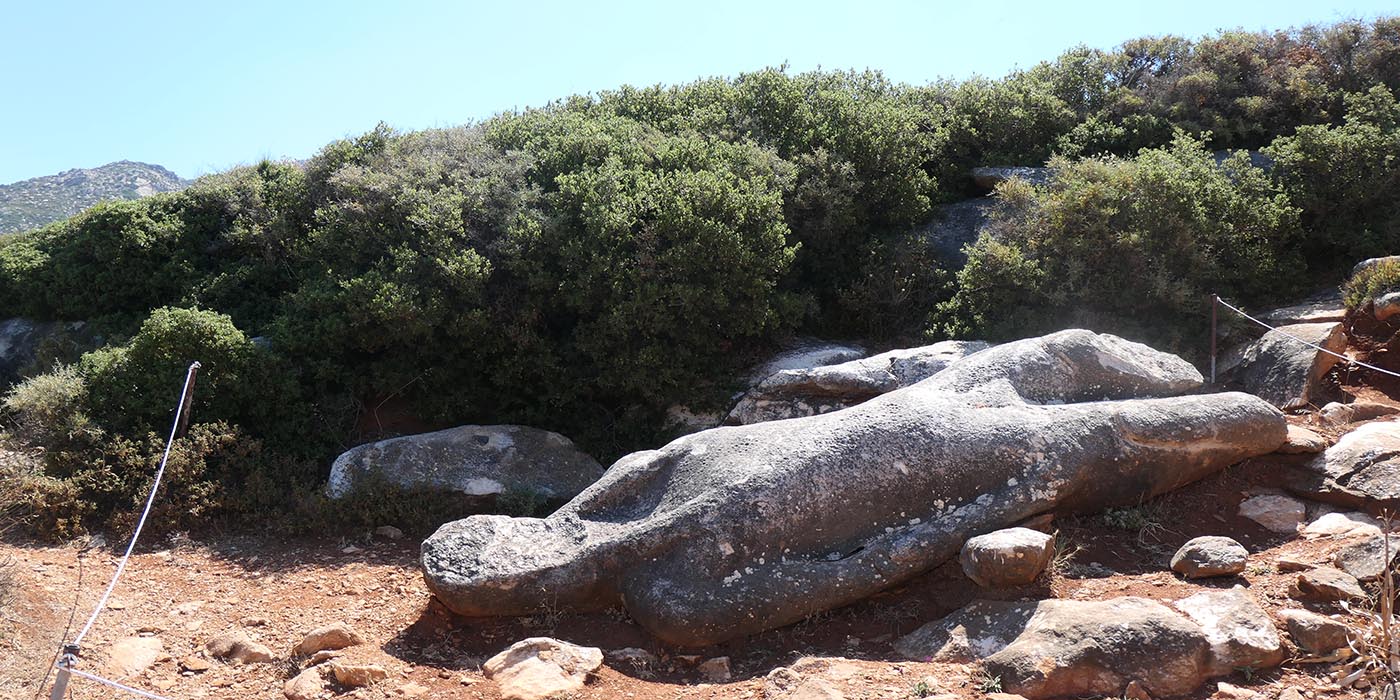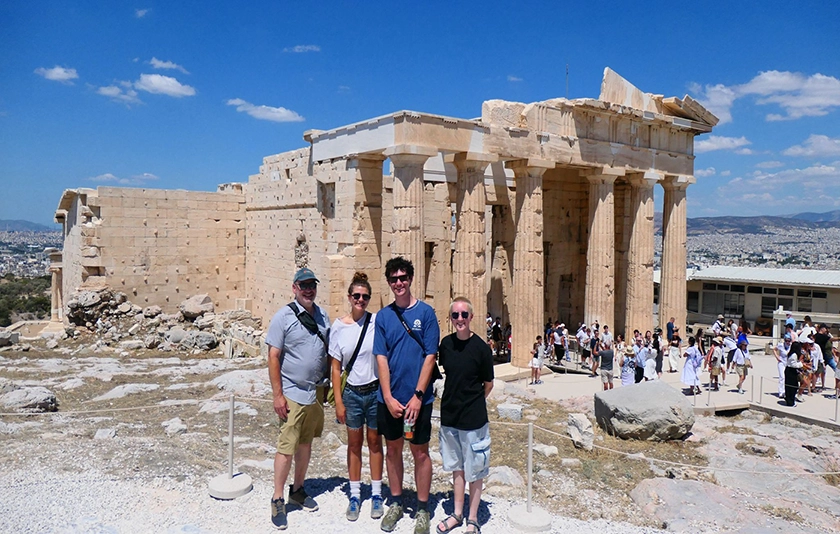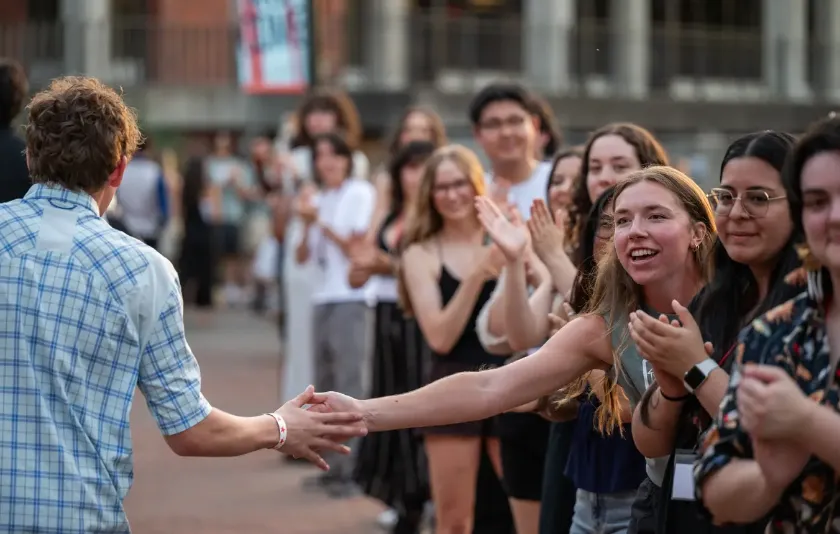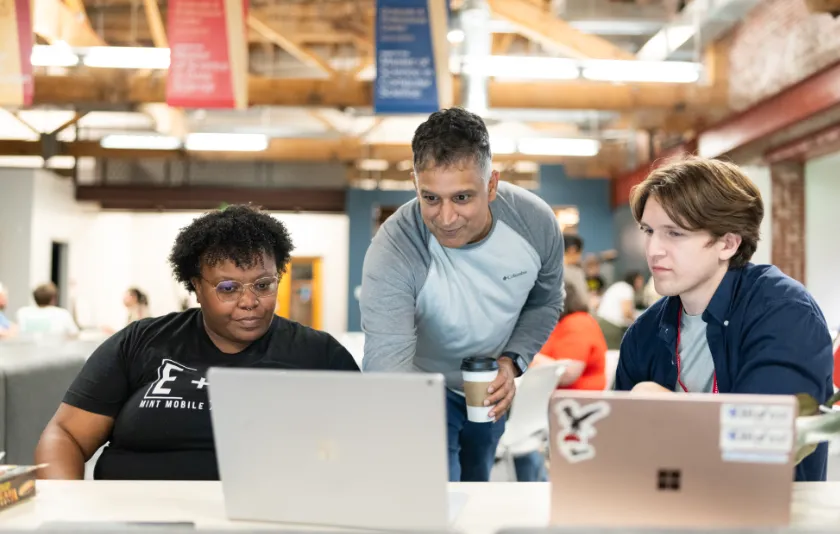“Conducted innovative drone and field reconnaissance projects in Europe” is now a line Logan Banks ’24 can add to her resume.
In June, she was among five Willamette students who spent six weeks in Athens and the island of Naxos to improve their understanding of marble use and extraction in ancient Greece.
 Funded by a National Science Foundation grant and led by Professor of Environmental Science and Archaeology Scott Pike, the group was the first of three cohorts to earn the opportunity to conduct joint and independent research there every summer until 2024.
Funded by a National Science Foundation grant and led by Professor of Environmental Science and Archaeology Scott Pike, the group was the first of three cohorts to earn the opportunity to conduct joint and independent research there every summer until 2024.
Despite the historical significance of the quarries they visited — some were the source of Greece’s most famous monuments — little is known of the areas. Hundreds of aerial and ground footage captured by students, run through a mapping software, will help develop more accurate 3D models of the quarries as a basis for future research.
Banks, an archaeology and environmental science double major, called the trip life changing.
“It sounds so cliche,” she said. “But I would have never imagined being able to do something like this.”
For her project, Banks wanted to know whether the extent of vegetative growth could indicate relative age of the quarry walls. She studied the quarries at Mt. Pentelikon, a location northeast of Athens famous for providing marble for the Parthenon and the Acropolis.
A multispectral sensor attached to the drone she used records narrow wavelength bands of visible and infrared light, so when she ran the images through the software, she could differentiate the presence of specific vegetation — lichen, shrubs, trees — as well as dry earth and rock surfaces.
Multispectral image analysis is commonly used in farming and agriculture, but this is the first time it’s been used in ancient quarry studies.
While Banks didn’t find a direct correlation between vegetation and age, “it’s always nice to try to find new methods of discovering how the ancient world was created,” she said.
CJ Lane ’23, an anthropology and archaeology double major, shot photos of unfinished kouroi — a kouros is a statue of nude youth — located in Naxos quarries. In the village of Melanes, two kouroi are believed to have been cracked while in transport and abandoned during the move. Another kouros, situated on the north shore of Naxos in the village of Apollonas, was abandoned during its carving and is still attached to the rock.
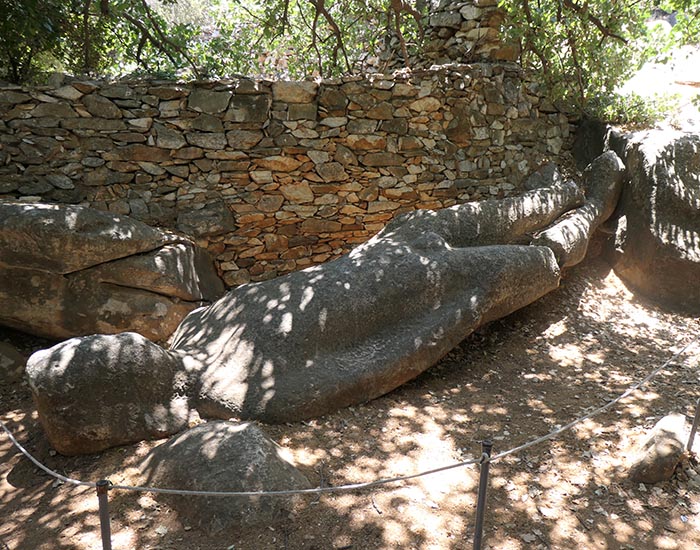
Lane was trying to figure out what could have happened to the kouros. In the process, he became more fascinated by marble than he would have ever thought, he said.
In addition to their research, students explored the country, formed connections with industry experts and visited the Wiener Laboratory of the American School of Classical Studies at Athens, of which Willamette is a member.
“The trip was a one-way ticket to an amazing grad program,” said Lane. “Truly the best opportunity I could ever ask for.”
